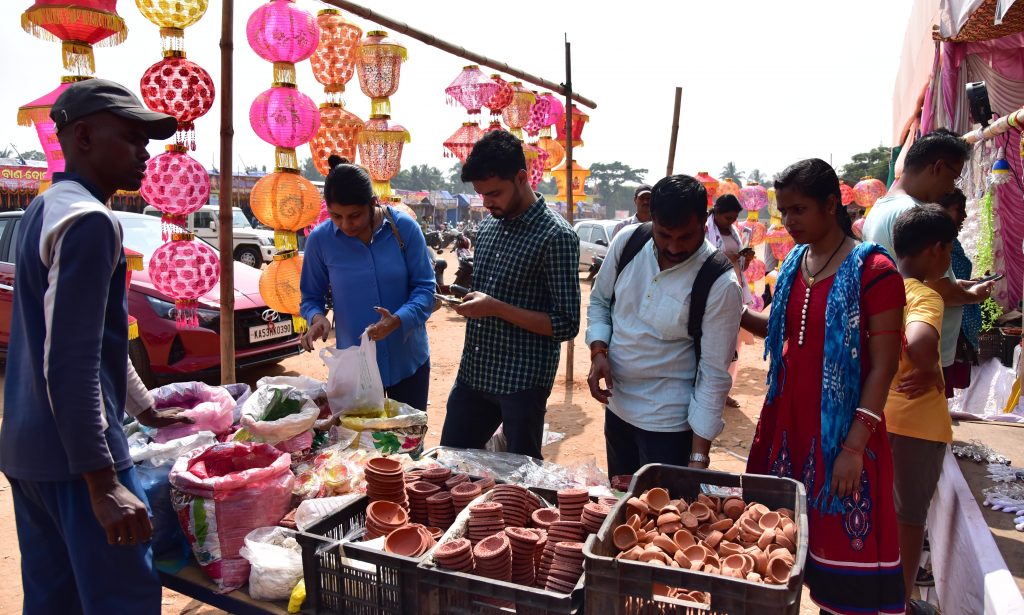Bhubaneswar: Earthen lamps are synonymous with every Hindu festival across the country, Odisha included. The lamp, commonly called diya, or dipa, has deep significance during the festival of lights, Diwali.
Traditional artisans have been making diyas since time immemorial. However, they have to improvise their craft continually in order to adapt to changing times.
Despite stiff competition from electric lights and home décor items, the demand for earthen lamps is still aplenty due to their timeless charm. Like every year, this year too, the artisans have come up with designer lamps to allure buyers.
Guna Sahoo, an earthen lamp maker and seller from Keonjhar said “My family which consists of 19 members has been working on diyas for several years now. Earlier, my father and his forefathers used to make the artifacts. During Diwali, the proceeds from the sale of diyas go up to Rs 20,000 daily.”
A potter from Sambalpur, Biswa Rana, said “People buy a variety of diyas – from regular ones to multi-layered. The price of such diyas is pegged at Rs 20 per dozen and the 1000 lamps for Rs 2,500 and more.
Lamps making seems quite easy to people, but it takes a lot of patience and experience to prepare a beautiful pair, Sahoo said.
“The process begins with filtering the mud which is then mixed with water and kneaded thoroughly to gain the required consistency of the clay. After preparing the dough, the required quantity of clay for making lamps is taken out and the remaining is covered with a wet jute bag to retain moisture,” Sahoo said.
Later, a lump of clay dough is put on the wheel before it is turned. By applying pressure, the clay is forced to set in the centre of the wheel. The mound is then pinched on the top centre using thumb and, by taking the support of the left hand the shaping of the clay is done, he added.
“Once the required shape of diya is acquired, it is removed from the rest of the clay lump by using a needle that is attached to bamboo stick. “It is the trickiest and most challenging part of separating the shaped diya from the remaining lump,” Sahoo said, adding, “the soft diya is dried under direct sunlight. Once dried, it is baked at 800 degree Celsius in the kiln. The hot diya is allowed overnight to cool down completely.”
As per the demand, some diyas are coloured and some are retained plain before they are sold, he added.
Shyam Sundar of Bolangir said for many like him, making and selling diyas is the only source of earning livelihood. “The income generated through selling diyas during Diwali fends us for a year,” said Sundar whose family of seven is involved in making diyas.
Meanwhile, the annual terracotta exhibition ‘Murtika-2023’ at the Exhibition Ground in the Capital city to facilitate artisans/ SHGs/ Co-operative societies to display and sell their products including Diyas, concluded Friday.
Artists from several districts like Keonjhar, Jajpur, Balasore, Subarnapur, Bargarh, Rayagada, Khurda, Nayagarh, Dhenkanal, Puri, Mayurbhanj, Jagatsinghpur, Bhadrak, Cuttack, Kendrapara, Bolangir, Sambalpur, Sundargarh, Koraput, Nabarangpur, Gajapati, Angul, Boudh, Kalahandi, Kandhamal and Nuapada took part at the event.
Arindam Ganguly, OP
